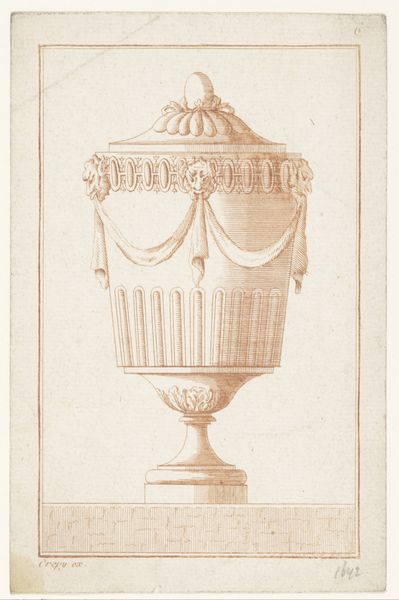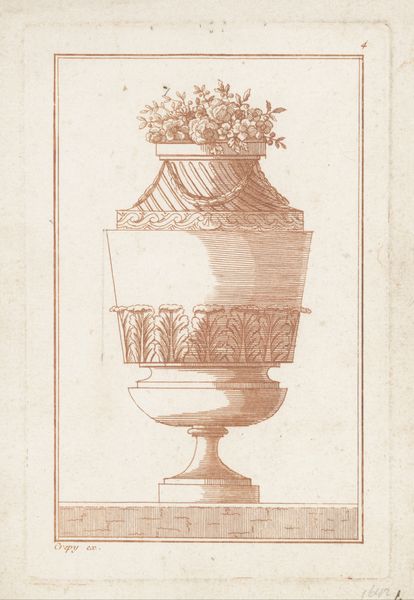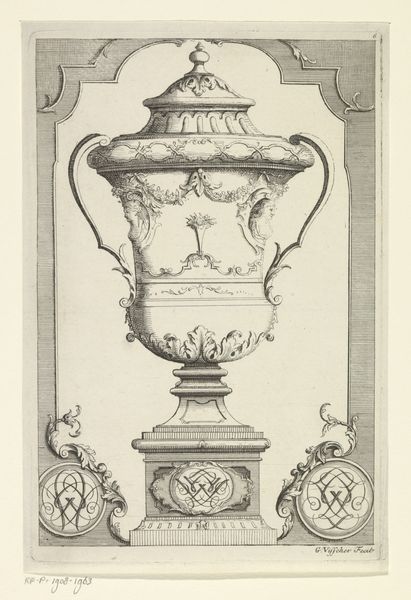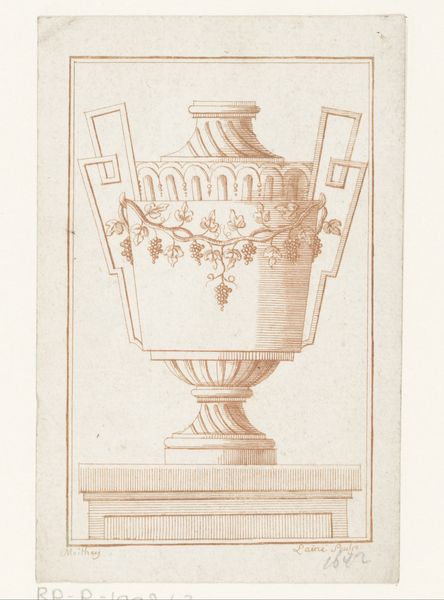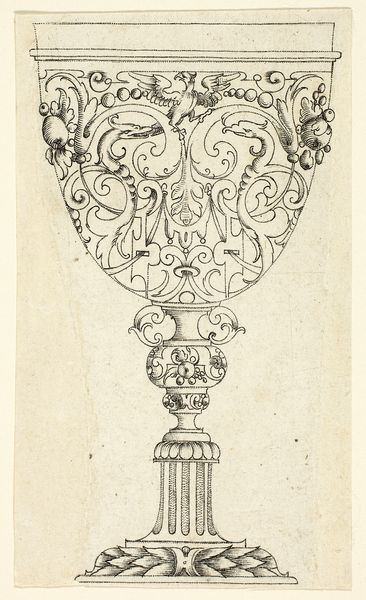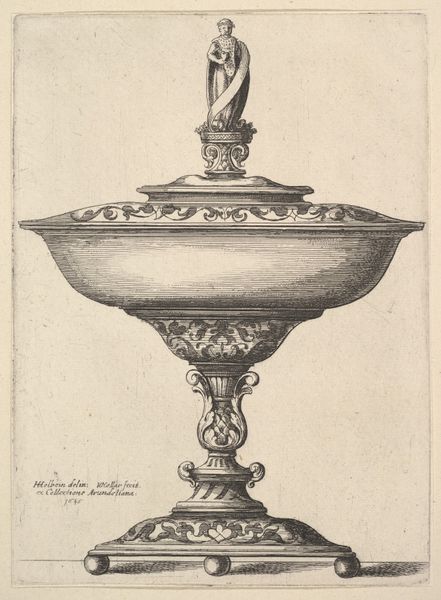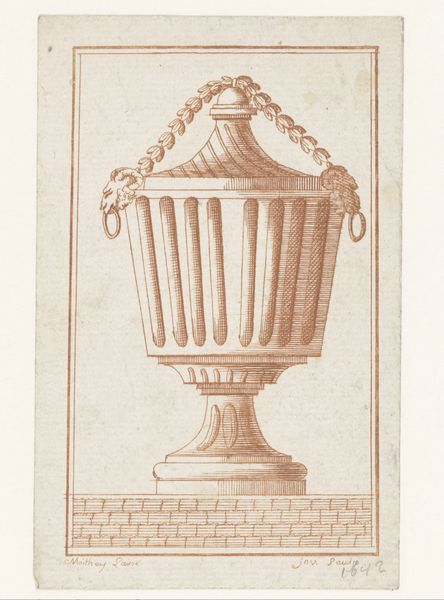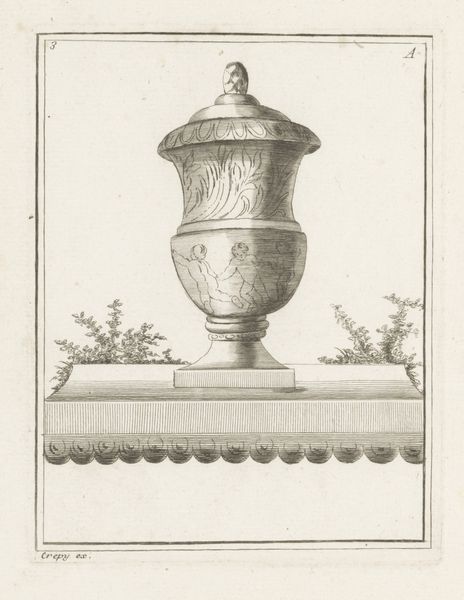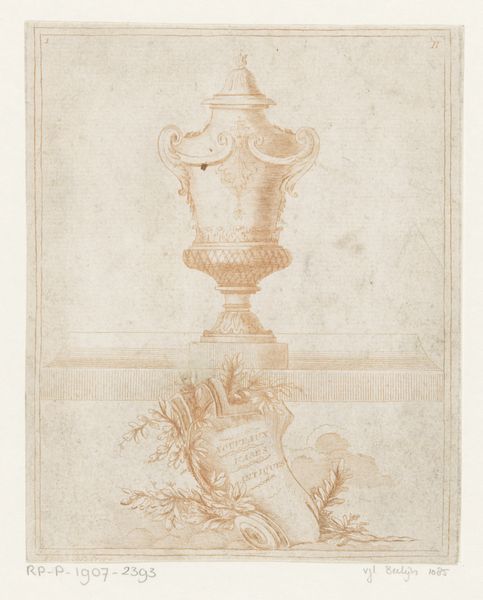
drawing, etching, ink, engraving
#
drawing
#
neoclacissism
#
blue ink drawing
#
etching
#
form
#
ink
#
line
#
decorative-art
#
engraving
Dimensions: height 187 mm, width 120 mm
Copyright: Rijks Museum: Open Domain
Editor: This is "Neoklassieke vaas met draperie," a drawing dating back to the late 18th century by P. Moithey. It depicts a vase, meticulously rendered in ink and engraving. It feels incredibly formal and idealized, almost oppressively so. How do you interpret this work? Curator: Oppressive is an interesting word choice. Consider the context. This piece is deeply embedded in Neoclassicism, a movement that deliberately harked back to ancient Greece and Rome. This wasn't merely aesthetic; it was a statement. It stood in stark opposition to the decadence of the Rococo that came before, aligning itself with ideals of civic virtue, order, and reason during a period of immense social and political upheaval. Can you see that reflected in the composition? Editor: I think so, yes. The symmetry and clean lines definitely convey that sense of order. But the drapery… is it meant to soften that rigidity? Curator: Perhaps. Or it might serve to subtly underline the power dynamics at play. Drapery in art is rarely just decorative. It can be used to conceal, to reveal, to denote status, to emphasize the body beneath, or even, in this context, allude to classical sculpture. Who benefits from this order? Who is excluded? Editor: I hadn’t thought about it that way. So the vase, while seemingly just a decorative object, becomes a symbol of power structures and societal values. Curator: Precisely. Neoclassicism, while championing reason, often ignored or suppressed marginalized voices. Reflect on how such visual expressions become tools in shaping a collective consciousness, one that reinforces particular socio-political positions. How does recognizing that context shift your perspective? Editor: It completely changes it! It's no longer just a pretty drawing of a vase, but a window into the complex power dynamics of the time. I see the need to question whose ideals are being represented. Curator: Exactly! Art, even in its most decorative form, is always a product of its time. Questioning its intended, and unintended, effects, opens up new understandings of art history.
Comments
No comments
Be the first to comment and join the conversation on the ultimate creative platform.
